
You want the best food for your dog, but that's not easy when marketing and economics get in the way of what's healthy for your pup. Learn what dog food ingredients to avoid in dry dog food so that you can feed your pet the high-quality chow they deserve without unwanted fillers.
You can't trust the dry dog food brands themselves, whether it’s a classic like Purina or some other top-shelf brand. Pet food companies can use tricks to make their dog food appear better than it actually is.
The package and the commercials can be misleading, but the dry dog food ingredient lists offer a more truthful look at what's actually in your dog's food and the nutritional content within the recipes.
These bad ingredients in dog foods are some of the worst offenders in pet food. While all of these ingredients are legal to put in dog food in Canada, they've been outlawed in many countries and are just not worth the risk.
You should always check the dry dog food label before making a purchase. Remember, your dog’s food can set the foundation for a lifetime of health. So say goodbye to unwanted fillers that at a glance, might seem healthy.
Check your dog food ingredient label to make sure it's not harbouring one of these common but potentially harmful dry dog food ingredients. You might even want to check your own food label, as some of these ingredients can be found in people's food as well. Instead, choose one of the healthy alternatives suggested.
There are many healthy brands of dog foods to choose between for pups and adults. Always check the consistency of the recipes.
Explore the following table of contents about pup food to determine what ingredients to avoid. You should make a list of foods that are safe for pups and ones that are bad so you can quickly scan all food labels.
It only takes a few moments to look at your dog’s food label to determine that you are feeding a healthy diet. It’s a way to ensure your dog’s ongoing health.
Check the food label to watch out for these 24 Bad Ingredients in Your Dog's Food. They are the main ingredients to avoid when picking a nutrition-rich dog food without fillers for your pup, adult or senior furry friend.
1. BHA/BHT
BHA and BHT chemical preservatives used to preserve fats in human and pet foods are concerning. Most pet owners are surprised to see the preservatives in their dog’s food.
Although banned in some countries, BHA and BHT are approved for food use in small quantities in Canada, the US, and Europe. Depending on the study, some have been inconclusive so far, but BHA and BHT have been linked to child hyperactivity and even cancer in humans, so imagine what it will do to your pup.
BHA, or butylated hydroxyanisole, is a common chemical preservative that is frequently used in dog food to extend its shelf life. BHA works by slowing down the oxidation of fats and oils in the dog’s food, which can help to prevent it from spoiling.
While BHA has been approved for use in pet food by regulatory agencies, it has also been the subject of controversy due to concerns about its safety and nutrition.
Many news outlets and a study have suggested that BHA may be linked to health problems in pups, including cancer, liver and kidney damage, and developmental problems in puppies.
Despite these concerns, BHA remains a popular preservative in dog food recipes due to its effectiveness and low cost.
To help reduce the risk of health problems associated with BHA and other chemical preservatives, some pet owners opt for dog foods that use natural preservatives such as vitamin E and rosemary extract instead for preservation and nutrition.
However, there is also promising research that the preservatives can be used to help cure herpes and even AIDS. The problem is nothing is for sure. Until more research is available, avoid these potentially harmful additives in dog foods whenever you can. Ideally, you should pick dog foods that do not contain BHA/BHT.
Human foods BHA and BHT preservatives are found in many brands of the following: dry cereals, butter, beer, margarine, chewing gum, and other processed food products. Sadly, BHA/BHT preservatives are also found in many brands of dog foods.
Always check the food label to determine if it contains BHA or BHT, and if so, then you should avoid feeding it to your pup.
The toxicity should always be factored in when considering preservatives in the recipes. Look for medical studies that show how BHA and BHT impacted mice and rats to get an idea of the toxicity of the artificial preservatives.
Ethoxyquin Controversy
Ethoxyquin is a type of synthetic antioxidant substance frequently used around the world as a preservative in dog food to prevent the oxidation of fats and oils, which can lead to rancidity and spoilage. It effectively extends the food’s shelf life.
While ethoxyquin has been approved by many regulatory agencies, such as the FDA, for use in pet foods, it has also been the subject of controversy due to its effects and concerns about its safety.
Study the research to decide on the safety. The preservative ethoxyquin has been linked to health problems such as liver and kidney damage, as well as potential cancer risk. Many pet parents prefer to avoid dog foods that contain ethoxyquin, opting for natural preservatives instead.
Despite the controversy surrounding its safety, ethoxyquin remains a preferred preservative in dog food due to its effectiveness in preventing spoilage. There are reasons to use ethoxyquin.
Unlike natural preservatives such as vitamin E and rosemary extract, which can break down quickly and lose their effectiveness over time, ethoxyquin is highly stable and can provide long-lasting shelf-life protection against oxidation.
Ethoxyquin also has a relatively low cost compared to other preservatives, making it an attractive option for pet food manufacturers. Ultimately, whether or not to use dog food containing ethoxyquin is a personal choice that each pet owner must make based on their individual concerns and preferences.
Chemical preservatives in dog food, including ethoxyquin and others, have been linked to kidney failure in dogs in a study. The exact mechanism by which these preservatives may lead to kidney failure is not well understood, but it is believed that they may cause damage to the kidneys over time. Sadly, the toxicity is extreme in the recipes.
Ideally, chemical and artificial preservatives are ingredients to avoid in your dog’s food. In most situations, they should not even be consumed by humans.
If you want to avoid preservatives completely, go with canned dog food. One of the benefits of canned dog food is that the canning process eliminates the need for chemical preservation.
Healthy Alternative: Natural Preservatives or Canned Food
There are plenty of natural preservatives to use in place of artificial preservatives used in pet foods that bring nutrition and are beneficial for pups of all ages, such as:
-
- Vitamin C (ascorbic acid)
- Vitamin E (mixed tocopherols)
- Rosemary
You should study the benefits of each. While they are not as effective for as long as artificial preservatives are at preventing fat rancidity (so they tend to have shorter expiry dates) in dog foods, they're a safer nutrition choice.
BHA and BHT are chemical preservatives commonly used in dog food to prevent spoilage. However, these preservatives have been associated with health concerns in both humans and pups, including cancer, liver and kidney damage and other effects.
While regulatory agencies have deemed BHA and BHT safe for use in pet food, some pet owners prefer to avoid them and opt for dog foods that use natural preservatives such as vitamin E and rosemary extract instead as a way to avoid unwanted chemicals.
Many believe the preservatives are carcinogens after ingestion and are the basis for avoiding the preservatives.
The use of these synthetic BHA and BHT preservatives in dog food has also raised concerns about the nutrition quality and sourcing of ingredients used in pet food, as well as the potential for contamination with harmful substances such as antibiotics, hormones, and pesticides.
When feeding your pup dinner, if you want to avoid preservatives completely in dry dog food, go with canned dog food. One of the benefits of canned dog food is that the canning process eliminates the need for chemical preservation.
The dog foods are safe and healthy for a pup while being preservative-free, filler-free, and filled with nutrition.
Another natural preservative option for preservatives in dog food is nitrogen. Nitrogen removes the oxygen so harmful bacteria cannot grow in the food recipes.
2. White Flour
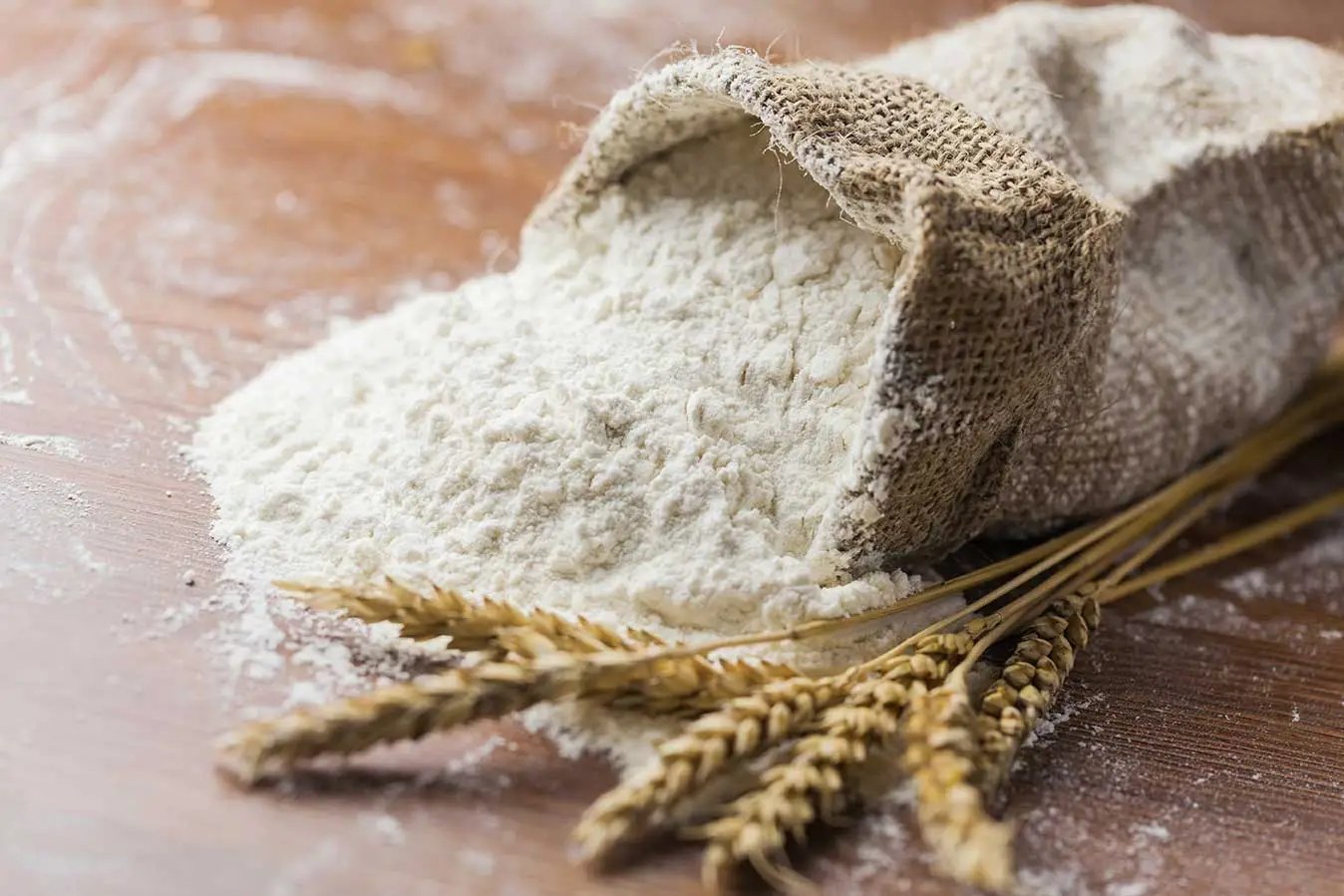
White flour is a simple carbohydrate substance with most (if not all) of its nutrition stripped - so basically, an unwanted filler. The problem with white flour is that after ingestion, it causes a spike and then a drop in blood sugar, causing your pup to be hungry again soon after consuming it.
Overconsumption of white flour can lead to weight gain, obesity, and diabetes in dogs, especially when used as an additive in dog foods for convenience.
Check the food label to determine if it is an additive before making a purchase for your pup. You want to ensure the best nutrition for your pet.
Healthy Alternative: Whole Grains or Grain-Free
White flour is not necessary for your diet or your pet’s – choose nutritious, novel whole grains instead as the ingredients in the dog foods. Whole grains like quinoa, oats, or brown rice are all great alternatives for both pets and humans.
For healthy tips, you can also look for dog food brands that use legumes, sweet potatoes, or other high-fibre nutritious veggies. Your pup will love the taste, and the health benefits and effects are undeniable.
3. Meat and Meat Meal
Meat is healthy for your pet’s dinner. It should comprise most of your dog's diet; however, if you see unnamed “meat”, “meat meal”, or “meat and bone meal”, you know that your pet is getting the worst source of meat he could in processed food such as from a rendering plant.
Dog foods with processed foods should be avoided, so study the food label and avoid meat meal which is unhealthy waste product for a pup of any age.
Meat/meat meal is another one of those non-descript items found in your dog’s food. You’ll find on the food label that it will keep cropping up in this list of worst dog food ingredients and unwanted fillers found in some brands. The rendered animal meat is often unsafe and does more harm than good.
Unlike cats, dogs have the ability to make sufficient taurine from meat protein and do not need it as an additive to their foods.
When manufacturers include “anything goes”, non-descript terms, such as "meat", it is always a guess at what's in them, and normally the meat source came from a less than sanitary rendering plant.
These ingredients that are bad for dogs are always the leftovers, and the only guarantee is that there is no guarantee of any standard of quality with the dog foods.
There are serious reasons to avoid meat meals. The ingredients of meat meal in dog food can be diseased, from dead animals, from expired meat sections in grocery stores (complete with plastic packaging), or dead animals with tumours – you name it. Overall, low-cost meat meals should be avoided.
Once this Frankenstein concoction is compiled, it is heated extensively to remove any pathogens that might be there (they most definitely are). This process also removes most nutrients that might be in these questionable ingredients leaving dogs nutrient-poor.
There is also a degree of toxicity that should always be considered as the other health trouble issues that can arise.
The result is a difficult-to-digest, nutritionally void meat meal filler that boosts the protein percentage on your dry dog food bag but adds little usable protein for your pet.
You want to pick dog foods that have good protein ingredients and avoid brands that do not and only have meat meal which has been shown to be unhealthy for your pup and is one of the ingredients to avoid in your dog’s food recipes.
Healthy Alternative: Named Meats and Meat Meals
Look for real meats you can recognize, such as whole deboned chicken, turkey, lamb, beef, or salmon, or meals of these meats. These dry dog food ingredients in certain brands are likely processed less, which leads to poor consistency, and contain more natural nutrients and usable protein.
Meat by-products are a common ingredient in many types of dog food, and they refer to any part of the animal that is not considered real meat for human consumption.
The meat meals can include organs, bones, and other parts of the animal, such as cow, lamb, pig, or more, that may not be commonly eaten by humans but can still provide important nutrients for pups.
Some examples of meat by-products that may be included in dog food for nutrition are liver, kidneys, lungs, spleen, and intestines. These parts of the animal can be a rich source of nutrition, protein, vitamins, and minerals that are essential for the health and well-being of pups.
However, it's important to note that not all meat by-products are created equal. Some lower-quality dog foods may include by-products that are not fit for consumption, such as hooves or hair, which offer little nutritional value.
Such ingredients are NOT considered meat by-products. There are many reasons why they should be avoided.
It's important to choose a high-quality dry dog food that includes only the best meat by-products for optimum nutrition in the mixture. There are many reasons why but the main one is that the evidence shows it's healthy for your dog regardless of the animal’s size.
Some pet owners may prefer to avoid meat by-products altogether and opt for dog food made with whole meats or meat meals. While this is a personal choice, it's important to note that high-quality meat by-products can be a valuable and nutritious ingredient in a dog's diet as long as they are sourced and processed properly.
To help you find the healthiest dog foods for your pooch, check out The Best Kind of Protein for Dogs. You’ll study many brands that contain premium protein choices when you take the time to read the food label.
Not only are the foods healthy, but your pup will love them. The guide is a great convenience when picking a brand and recipes. When shopping for groceries and adding dog food to your shopping cart, you’ll want to buy the best.
4. Artificial Colours
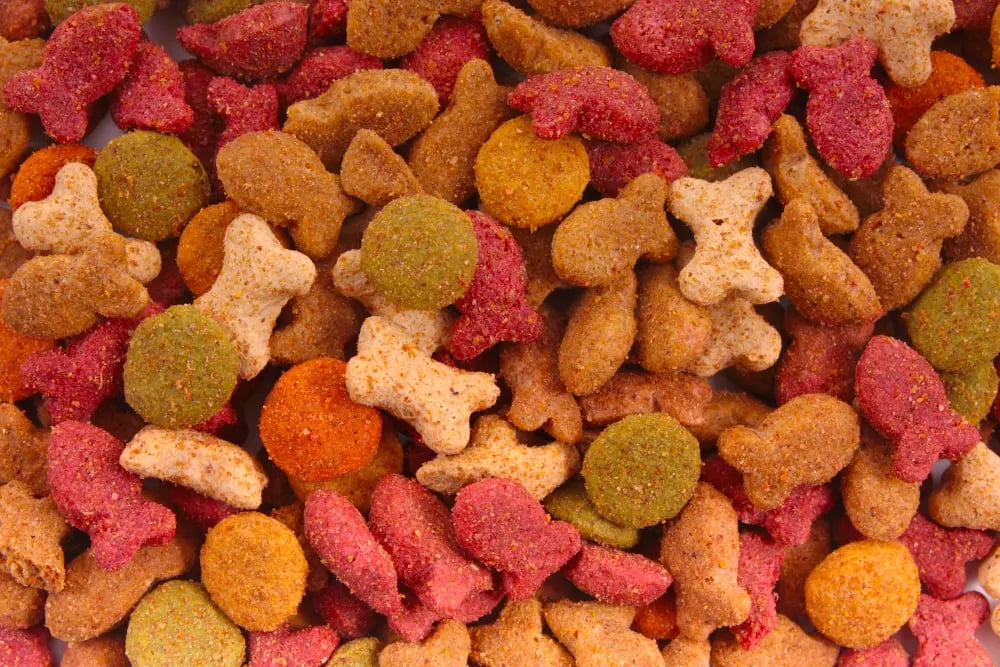
Artificial colours (food dyes) make things look more visually appealing. Pet owners like dry dog food that has a rich caramel colour because it looks tasty.
However, artificial colours have been linked to hyperactivity as well as several biochemical processes and effects within the body. You’ll want to learn the differences between the preservatives.
The only reason artificial colours and dyes are used in any food is to make the food look better to you. Dog foods do not have to look good to the pup. Canines pay more attention to smell and taste than sight.
Food dyes are strictly to make food ‘look’ appealing. Actually, most dogs enjoy foods that are not visually appealing. They don’t care if the food has a rich caramel colour or a vibrant red meat hue.
Red40, also known as Allura Red AC, is a synthetic food colouring commonly used in dog food and other pet foods to enhance its visual appeal. The water-soluble dyes can impart a bright red or pink colour to the food, making it more visually appealing to pets and their owners.
However, the dyes are unnecessary and only for looks. They have no health benefits or nutrition, and ingestion may be harmful.
Red40 is considered safe by regulatory agencies. It is also an example of an artificial colour that might not be ideal. Some pet owners may choose to avoid it due to concerns about potential health effects, including hyperactivity, behavioural problems and other long-term ailments in dogs.
To ensure the safety and quality of dog food, some pet owners opt for dog foods that use natural ingredients in the recipes and avoid artificial colours, dyes, and flavours.
Yellow 5, also known as Tartrazine, is an artificial food colouring substance commonly used in dog food and other pet foods to enhance its visual appeal. It is a water-soluble dye that can impart a bright yellow or orange colour to the food
Concerns have been raised about the safety of Yellow 5 and other compounds. While Yellow 5 has been deemed safe for use in pet food by FDA experts and other agencies, many pet owners try to avoid it because they view it as a potential carcinogen.
The irony of adding colour to dog food is that it’s only for humans. Dogs' eyes are not able to see colour in the same way that humans do.
Humans have three types of colour receptors, called cones, in their eyes, while dogs have only two types of cones. This means that dogs are colorblind in the sense that they cannot distinguish between some colours that humans can.
Specifically, dog eyes have difficulty distinguishing between green, yellow, and red and tend to see these colours as shades of gray or brown. However, dogs are better at distinguishing between shades of blue and violet than humans are, as they have more blue-sensitive cones than humans do.
This difference in colour perception is related to the evolutionary history of dogs, as their ancestors were primarily active at dawn and dusk when visual acuity was more important than colour vision.
Today, dogs rely more on their sense of smell and hearing than their eye vision, but they can still see well enough to navigate their environment and interact with their human companions.
Caramel colour dyes are completely unnecessary for people and pets. And there's no reason to use artificial colouring dyes to gain the caramel colour in dog food ingredients. There are many naturally derived colours available to manufacturers that will give a brown or caramel colour that might not be as brilliant but is healthier.
Artificial colours (food dyes) that make the classic caramel colour of dog food can be made from anything, even fruit – but the colouring is very common in some brands of processed dog foods. However, dog owners should definitely consider dye one of the main ingredients to avoid for pups.
Healthy Alternative: Embrace Natural Colours
A dog food’s natural caramel colour may not be that visually appealing, but you might just notice the difference that the quality makes in your dog’s skin and coat, health, and vitality.
Dog foods do not have to be visually appealing to be healthy. Many brands lack the colour of food dyes but contain ample healthy nutrients in the recipes for pups. The result of avoiding artificial colours is that your pup will eat a healthier kibble.
5. MSG
MSG (monosodium glutamate) is prevalent in many prepared foods. But as common as the flavour enhancer is, MSG can cause trouble for humans and pets alike when it's added to dog kibble packages.
In pet foods (as well as human foods), it is used to make up for the lack of flavour in low-quality ingredients. Aside from being nutritionally unnecessary, MSG also happens to be a very common food allergen in humans and pets. Why risk it? Avoid a lot of ingredients that indicate MSG.
While MSG by law doesn't have to appear on pet food ingredient labels, you can often find it in these ambiguous ingredients within dog foods. Dog owners should always pay attention to the ingredients and study each one in the mixture.
Look for the following items in dog food recipes when weighing brands:
-
- hydrolyzed protein
- protein isolate
- texturized protein
- natural flavours (like chicken flavour)
- autolyzed yeast
- hydrolyzed yeast
- yeast extracts
- soy extracts or concentrate
- sodium caseinate
- calcium caseinate
- monopotassium glutamate
- glutamate or glutanic acid
- disodium inosinate or guanylate
All are ingredients to avoid in dog foods to ensure nutrition. If you find evidence of the above contents on the dog food label, then it is a sign that the food contains MSG.
Healthy Alternative: Dog Foods High in Named Meat Protein
MSG is a cheap, non-nutritive, unnatural flavour source – why not rely on real dog food ingredients to add flavour instead of fake alternatives?
Rich inclusion of chicken, beef, or pork in your pet's dog food would eliminate the need for flavour enhancers. The meats are not only ideal for pets but also for humans. Study each ingredient for a sign it is actually real.
6. Gluten
There aren't many dog food ingredients that get as much buzz in the press or with pet parents as gluten, even in cereals these days. While many people are avoiding gluten to improve their digestion and even lose weight, your dog's reasons for avoiding gluten might be even more compelling.
Gluten, found in grains, is not a natural food for dogs or cats to consume. In dog food, gluten can be found in any gluten-containing grain, such as wheat or barley, in the ingredients lists.
Also, wheat gluten can often be found as an ingredient on their own, used as a binder to form the kibble shape and texture. Look on the food label to determine if it is an ingredient.
Dogs are considerably more receptive to gluten-containing grains than cats are, but many still develop allergies and suffer from digestive distress due to the unnecessarily high quantities of grains in the standard processed kibble diet.
Stinky ears and chronic ear infections, itching, and hot spots are all common signs of gluten sensitivity or allergy in your pet. If your pet exhibits such symptoms or a sign of an allergy, seek veterinary assistance and pick dog foods that are gluten-free.
Many groceries and dog foods contain gluten. If dog owners are unsure of the ingredients, check the food label. Some brands even place helpful feeding tips on the dog food bags, so chances are good, you’ll get an idea of exactly what's in the food and how best to feed your pet.
Melamine Controversy
Melamine is a type of chemical compound that has been used in various industrial applications, including the manufacturing of plastics, fertilizers, and flame retardants.
In 2007, a significant pet industry scandal occurred when melamine was found to be present in pet food, particularly in dog food. The substance was added to the wheat gluten in dog kibbles.
The contamination occurred because some Chinese dog food producers added melamine to their products to make it appear that their protein content was higher than it actually was.
Melamine can artificially increase the level of protein in food when tested using traditional methods, even though it has no nutritional value and can cause health problems when ingested.
When dogs consume food contaminated with melamine, it can lead to extensive harm, such as kidney damage, kidney failure, and even death. Thousands of pets were affected by the contaminated food, and many pet food products were recalled in the aftermath of the scandal.
Since then, there have been efforts to improve the safety and regulation of the pet food industry to prevent similar incidents from happening again.
It's essential to choose high-quality, trusted dog food producers when purchasing pet food to ensure that your pet is getting the nutrients they need without any harmful additives and contents.
Healthy Alternative: Go Grain-Free
Humans and dogs can both experience gluten intolerance. Is your pet suffering? You may want to go gluten-free. Grain-free dry dog foods and kibble include vegetable sources of carbohydrates, such as sweet potatoes, or sticking to gluten-free grains like oats or buckwheat are ideal articles for best nutrition.
Others may not agree that grain-free is the way to go. Each pet owner must do their own research to decide what is best for their furry friend. For those who want to treat gluten intolerance, a grain-free diet might be a solution.
Hands down, you’ll want to find a healthy grain-free food choice to promote hip and joint health.
7. Corn Syrup
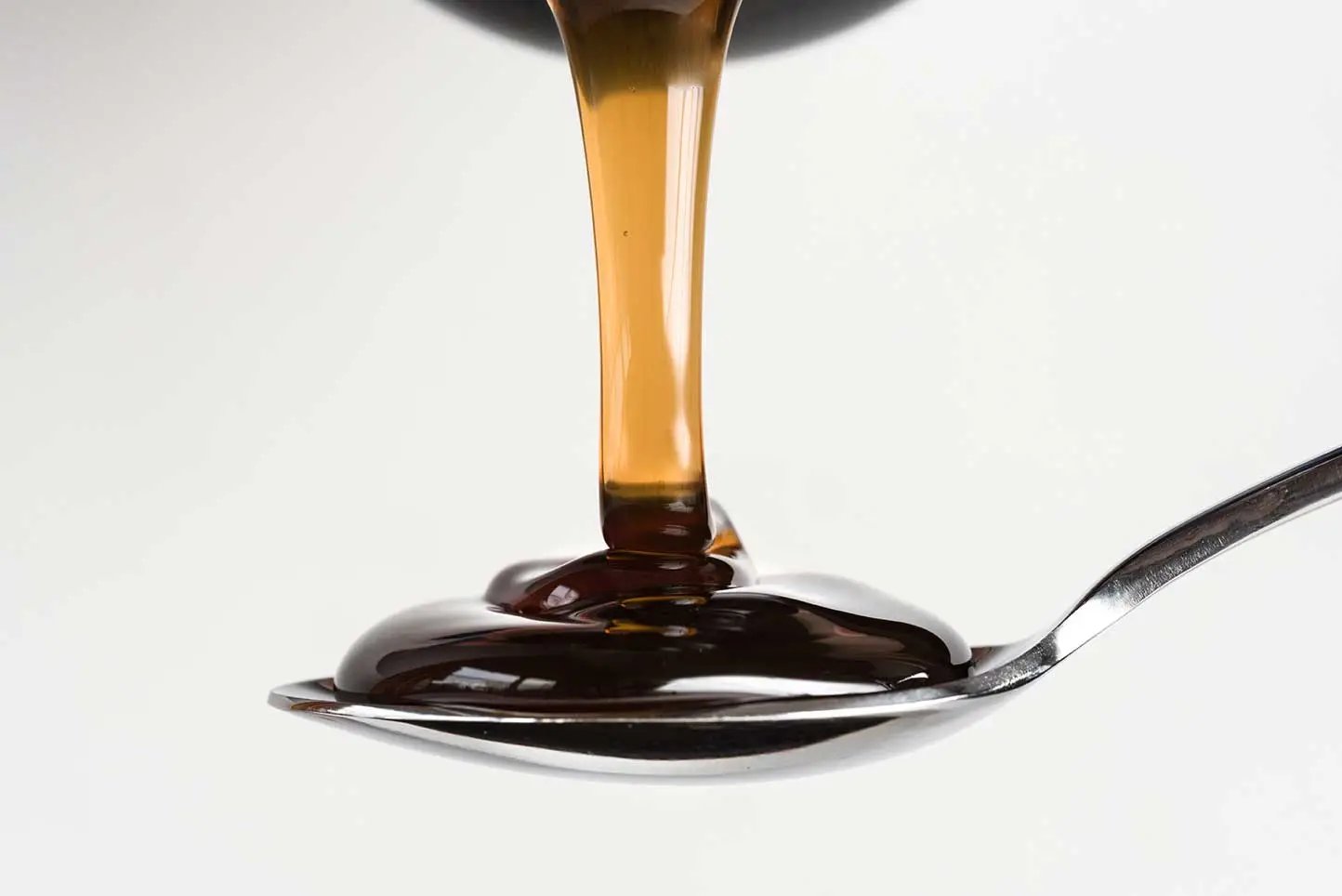
We all know that ingredients like corn syrup are a substance that is bad for our health. But did you know this cheap, sweeter-than-sugar sweetener can be food in pet food kibble and treats, too?
The sugary corn syrup is an all too common addition to dog food ingredients and lacks nutrition. In fact, many consider it toxic to dogs due to the long-term effects.
Corn syrup, much like refined sugar, causes spikes in blood sugar levels and contributes to weight gain, obesity, and diabetes.
It's also addictive in dog foods, and the more your dog eats the corn syrup, the more he'll develop a taste for all things sugary sweet because they are nothing more than a flavour enhancer. The substance has very little nutritional value but is often used to make the food more appealing.
In human foods as well as pet foods and treats, sugar and sweeteners are plentiful - especially corn syrup. Look closely on the food label for the list of dog food ingredients, and you’ll likely see corn syrup.
Often corn syrup is listed towards the bottom of the dog food ingredients, but it should still not be on the list at all. Corn syrup is one of the ingredients to avoid in dog food. So why take the chance? Don’t feed your dog food with harmful substances.
Healthy Alternative: Skip It
Avoid sugar in all its forms in your dog’s diet to keep blood sugar levels from spiking. Sugars to avoid include molasses, caramel, dextrose, fructose, glucose, cane molasses, or maple syrup. You should especially avoid corn syrup. If your dog's food has enough quality meat protein in it, your dog won't need any flavour enhancement, and the animal certainly won’t need corn syrup.
Always remember corn syrup in dog food can be dangerous for dogs as it can lead to obesity, dental decay, and diabetes, among other health issues. It is even bad for humans.
Take the time to read the food label. If the brand of dog food contains corn syrup, it's best to go with other, healthier dog food options. Avoid being swayed by popularity when picking a brand.
8. Farmed Salmon
Salmon is healthy for pet parents and dogs regardless of size or energy level, but the wrong salmon in dog foods can include harmful toxins. Farmed salmon, salmon meal, and salmon oil in your dog’s food can add mercury, PCBs, and other fat-soluble toxins to the diet.
According to a farmed salmon brochure by David Suzuki and the cited Journal of Nutrition (2005), levels of 13 fat-soluble pollutants are almost 10 times higher in farmed salmon than in wild salmon. The cancer rate from consuming farmed fish can be up to 3 times that of wild fish.
Healthy Alternative: Wild-Caught Salmon
There are many reasons to feed your dog wild-caught salmon. Look for sustainable, wild-caught salmon in dog foods for lower levels of pollutants and reduced cancer risk.
Natural fish can help with the development of strong bones (help prevent arthritis) and teeth. It should be advertised on the dog food bag as wild-caught. Salmon is ideal for both humans and dogs. It is a great flavour enhancer.
Study the dog food ingredients to see if it says the source of the salmon so you will have a better idea of the potential nutrition. Note there are no commercial Atlantic salmon fisheries, so if the salmon is listed on your dog’s food as Atlantic in dog foods, it's farmed.
If you take the time to carry out a bit of research, you can find a brand with a healthy source of salmon when shopping for groceries.
9. Xylitol and Other Sugar Alcohols
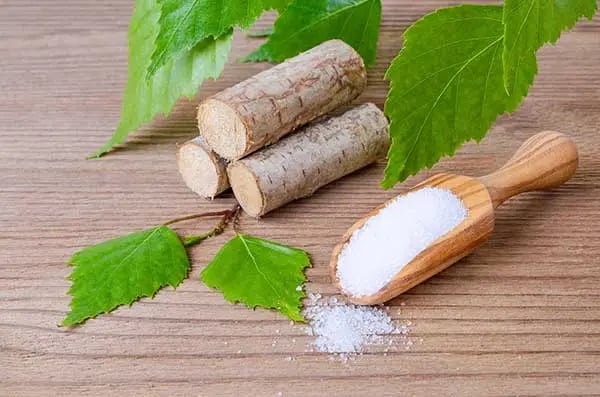
Sugar substitutes can be deadly for pets, and new research shows that they aren't doing you any favours, either. While sugar alcohols (such as sorbitol, maltitol, and xylitol, among others) may have little or no calories, they can still have an effect on blood sugar in dogs
Xylitol causes a surge in your pet's blood sugar and then a subsequent drop, which can result in hyperglycemia. Other complications can include seizures, cancer, liver failure, and even prove toxic to dogs.
While only xylitol is toxic to dogs, other sugar substitutes and articles found in dog food brands do nothing for your furry friend nutritionally. Their inclusion in the diet only feeds your dog's sweet tooth, which can make him crave sugar and not the nutrition he needs to thrive.
Always consider the glycemic index to determine your dog’s sugar intake. Pet owners can gauge food ingredients on the glycemic index to monitor their dog’s sugar consumption. Ensuring low sugar consumption can help improve the lives of pets.
And truthfully, sugar substitutes will do the same for you as your pup. All sugar substitutes are ingredients to avoid and nothing more than a flavour enhancer in groceries.
Recent studies link high sugar substitute intake with high blood sugar, a precursor to Type 2 Diabetes in humans, due to how these sugar substitutes alter normal gut flora. You and your pet would be better off enjoying whole food treats, such as fresh fruits and veggies.
Healthy Alternative: Skip It
Sugar substitutes are alternatives, but they're questionably healthy. If your dog doesn't need it at all, there's no need to include it.
Pay attention to the ingredients and choose a dog food brand with healthy ingredients, including naturally sweetened fruits and vegetables and hearty-named meats such as chicken listed on the dog food kibble ingredients.
Your pup will love the food, and you can rest easy knowing you are providing a combination of a healthy diet and great nutrition for your pet.
10. Nitrites or Nitrates (Sodium Nitrite)
Nitrites and nitrates, commonly found in prepared meats such as sausages, bacon, ham, hot dogs, and deli meats, are a preservative used to extend the shelf life of meat products.
Prepared meats are high-fat, high-salt items that can be occasional treats for you (think: once a week or less) but are better to avoid feeding your four-legged friend. However, it's not just human foods you have to be concerned about.
Sodium nitrite is an approved preservative in animal foods and can be toxic in high doses by causing a blood disorder called methemoglobin which is very dangerous for a young pup or a senior dog. It may even cause death. The use can act as a precursor to cancers and other physical problems.
Its accumulation over time in the system has also been linked to cancer, especially when combined with added ascorbic acid (Vitamin C) and alpha-tocopherol (Vitamin E), which are common natural vitamin sources.
It is one of the major ingredients to avoid on the ingredient lists when shopping for groceries. Pick dog food packages that do not contain it to keep your pet safe.
Healthy Alternative: Go Canned or Skip It
The process of canning dog food preserves, eliminating the need for adding chemical preservatives to food for the best nutrition. Supplementing canned food can be beneficial by reducing your pet's exposure to preservatives, even if you feed dry food recipes some of the time.
Whenever possible, pet parents should choose natural preservatives (such as mixed tocopherols, ascorbic acid, and rosemary) and make sure nitrites or nitrates are not in your pet food's ingredient list. If you are unsure, seek the advice of a veterinarian.
Always check the food label to maintain the safety of your pup and ensure the optimum nutrition and best growth. Every little bit of due diligence will help ensure the long-term health of your pet.
You should collect food references from your veterinarian to ensure you pick a healthy choice for all of your dog’s problems, whether hip, heart, or more.
11. Soy
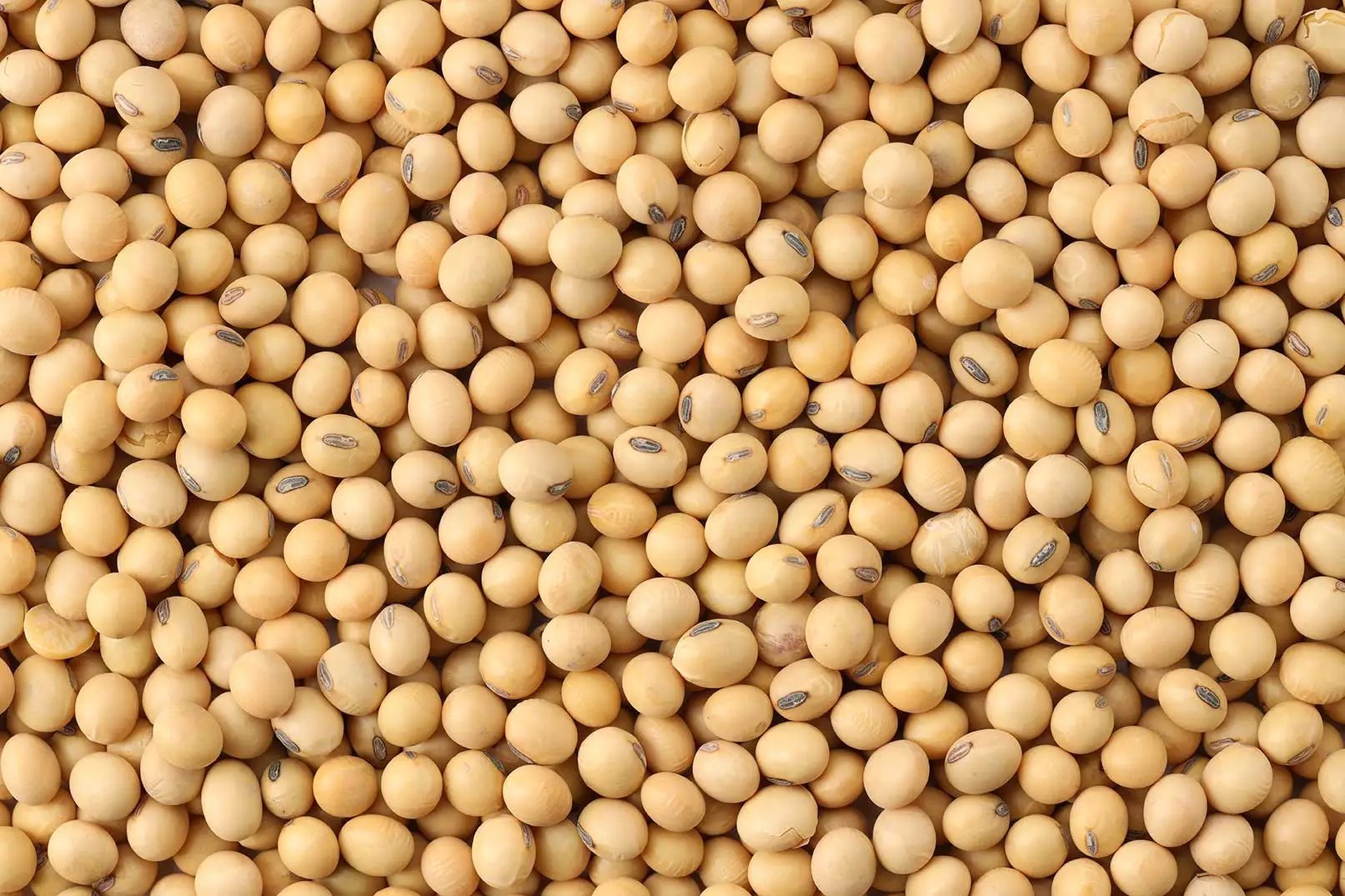
Few ingredients are as controversial as soy for both humans and pets. Most consider it an unwanted filler ingredient. But, while soy may have some benefits for you and is considered safe by the FDA experts, there are a few things it does for pets.
The truth is, grain and vegetable-based protein sources are just not as useful to pets as their meat protein counterparts, so should not be a primary ingredient in your dog’s food. Pay attention to the label to determine if there is any soy in the kibble packages.
The reduced bioavailability of plant-based proteins, or the ability of your dog's body to process and use the proteins and nutrients, makes these proteins less usable for energy and body processes from immune response to muscle maintenance to metabolism.
While soy is one of those few plant protein sources that actually contain all necessary amino acids, there are still reasons it is not good. Soy is often difficult for pets to digest, causing bloat and gas.
A cheap ingredient in dog food and dog treats, it is plentiful in many low-quality pet foods as a protein percentage booster.
A common allergen, soy is best to avoid in dog food altogether if you have pets. Look on the food label to determine if the brand contains soy.
If it is high in soy, then do not feed it to your pup. Soy is one of the ingredients to avoid when picking a dog food brand that provides the best nutrition for your pet.
Healthy Alternative: Choose Meats
The best proteins for your pet are meat-based proteins. Eggs and named meats or meat meals have high bioavailability for dogs and cats. These sources of protein have complete amino acid profiles for both dogs and cats and are easy for pets to digest, which makes them a great addition to the best dog food for the greatest nutrition and needs. They are good for everyone.
12. Sodium Tripolyphosphate (STPP)
While you may not recognize it by its name, sodium tripolyphosphate is the active ingredient in many detergents, as its main use is softening water.
So why is it in your dog food and dog treats? Good question. Sodium tripolyphosphate works as a preservative in your pet's kibbles.
According to a fact sheet by the Food & Water Watch, sodium tripolyphosphate preservative can be harmful if inhaled and is a skin irritant (MSDS). While it is GRAS (generally regarded as safe) to eat, the National Institute for Occupational Safety and Health Problems (a division of the CDC) suspects it may be a neurotoxin.
The U.S. Environmental Protection Agency (EPA) recognizes sodium tripolyphosphate preservative as an insecticide, fungicide and rodenticide. Let's leave this unnecessary, non-nutritive ingredient out of our dog food. Dogs do not need to consume such harmful chemicals in their kibbles.
Watch for STPP in your fish, too. It's used as a soak and can be found in scallops, shrimp, and flaky, fileted fish. STPP is definitely one of the ingredients to avoid if you want to ensure the pet’s nutrition.
Healthy Alternative: Go Natural
Pet owners should go for natural preservatives in dog food, such as rosemary extract, instead. Rosemary is not recommended for dogs that have any type of seizure disorder, so always check with your vet if your dog has a health condition that might be affected by these ingredients in kibble.
Natural options can help you avoid health problems later, so you'll find rest knowing you have given your beloved furry friend the best.
13. Salt
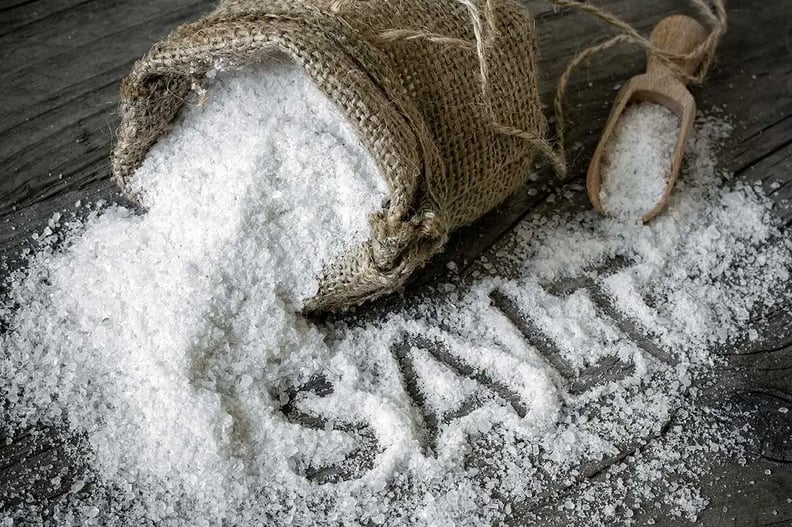
Salt is necessary for both human and canine nutrition. However, too much salt is harmful to both us and our pets. Salt is usually found in sufficient quantities in your pet’s food without adding it directly. Both humans and dogs tend to consume an overabundance of salt.
Dog food manufacturers add salt to pet food for flavour and to encourage drinking (although salt consumption can lead to dehydration). High levels of salt can contribute to high blood pressure and other suspected health conditions, including stomach cancer, stroke, and cardiovascular disease.
One fact that few pet owners know is that pet food is required to include less than 1% salt in a complete and balanced diet. When a high-quality diet is fed in appropriate portions, your dog should get all the salt they need daily.
Try to avoid feeding treats and human foods that are high in salt to dogs. Most veterinary providers consider salt one of the ingredients to avoid when feeding your dog a healthy diet.
The thing you should always consider is the amount of salt found in the recipes and ingredient lists. Even a tiny bit of salt is too much in most situations for most breeds.
Healthy Alternative: Skip It
Once again, if your pet food contains plenty of real, quality meat, your dog or cat won't need any added flavour enhancers. Most pups will be happy with the food and nutrition, plus it will help with their growth and prevent health complications.
Always seek references for foods with ample meat and the advice of a veterinarian.
14. Rendered Fat
Also called animal fat from beef or some other source, rendered fat is a very low-quality ingredient in dog foods. While fats from animals are healthy in moderation, unnamed “animal fat” or “poultry fat” comes from unidentified animals, which may not be from the highest quality sourced.
There is simply no way to tell what is in the stuff. Sometimes it's roadkill that is used in the food.
Rendered fat or rendered animal fat from roadkill is often rancid, and its inclusion in animal feed means that other questionable ingredients, such as non-descript flavours, will be added to cover up the taste.
The other problem with this low-quality fat is the toxin load. Many toxins are stored in animal fat. Low-quality fats contain more fat-soluble toxins than more desirable descriptive fats, such as “chicken fat". You want to go with healthy fats. The best fats should only be from named sources and recipes for the best results.
Healthy Alternative: Choose Fats from Named Sources
Make sure all the ingredients listed as animal fat or oils in animal feed come from named, known sources. Avoid non-descript terms such as poultry fat, animal fat, vegetable oil, and fish oil.
Named ingredients such as salmon oil, chicken fat, beef fat, lamb fat, pork fat, and coconut oil are better options that provide nutrition and energy.
15. Propylene Glycol
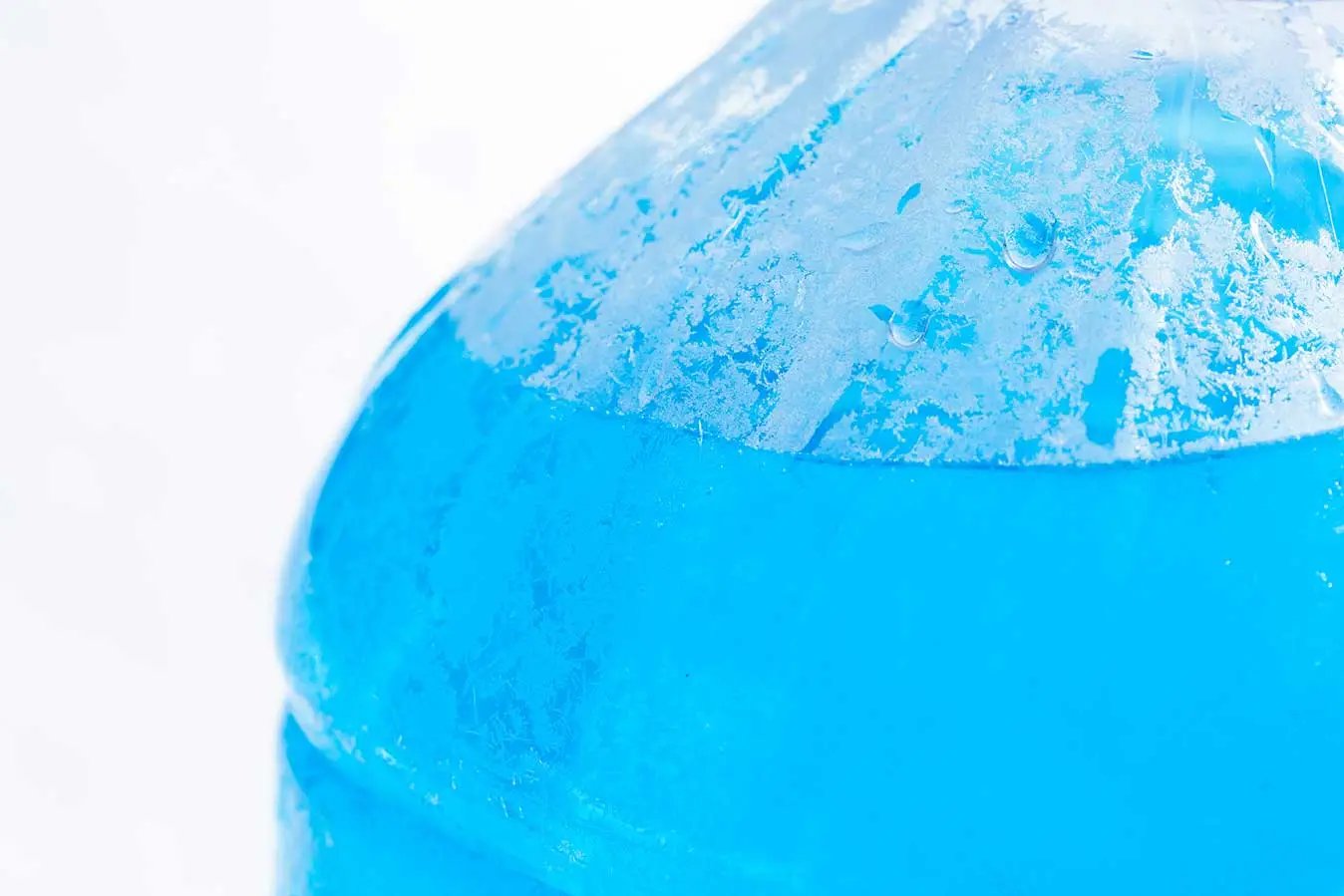
Does this one sound familiar? Yes, it's a common ingredient in newer antifreeze. While not as toxic as its relative, ethylene glycol, FDA-approved propylene glycol is still of questionable safety whether in antifreeze, a compound or as another additive.
In fact, propylene glycol has been banned in many countries or is at least tolerated at much lower levels. Used as a humectant or to keep moisture in semi-moist canine foods, propylene glycol may be toxic in large amounts.
While propylene glycol can be safely metabolized by your dog's liver into safe compounds, manufacturers assure us of its safety for use in dog foods. However, propylene glycol has been found to be toxic to cats, causing Heinz body anemia.
So much so that propylene glycol is not allowed as an ingredient in cat food, you're better off saying no to propylene glycol, especially if you have cats in the house. The chemical is not healthy for animals.
Drink cola? You'll find propylene glycol in there and many other common processed products such as beer, margarine, cake mix, and flavoured coffee.
As mentioned, always avoid ethylene glycol and propylene glycol, which bring no nutrition to the table and are actually harmful.
Healthy Alternative: Avoid Semi-Moist Foods
Avoid those foods marketed as semi-moist, which lack needed nutrition. Choose the best canned or even dry dog foods instead as a great way to avoid this troublesome additive on the ingredient lists and recipes, which can lead to health problems. You want to help keep your pet healthy, so your pooch can live a long life.
16. Vegetable Oil
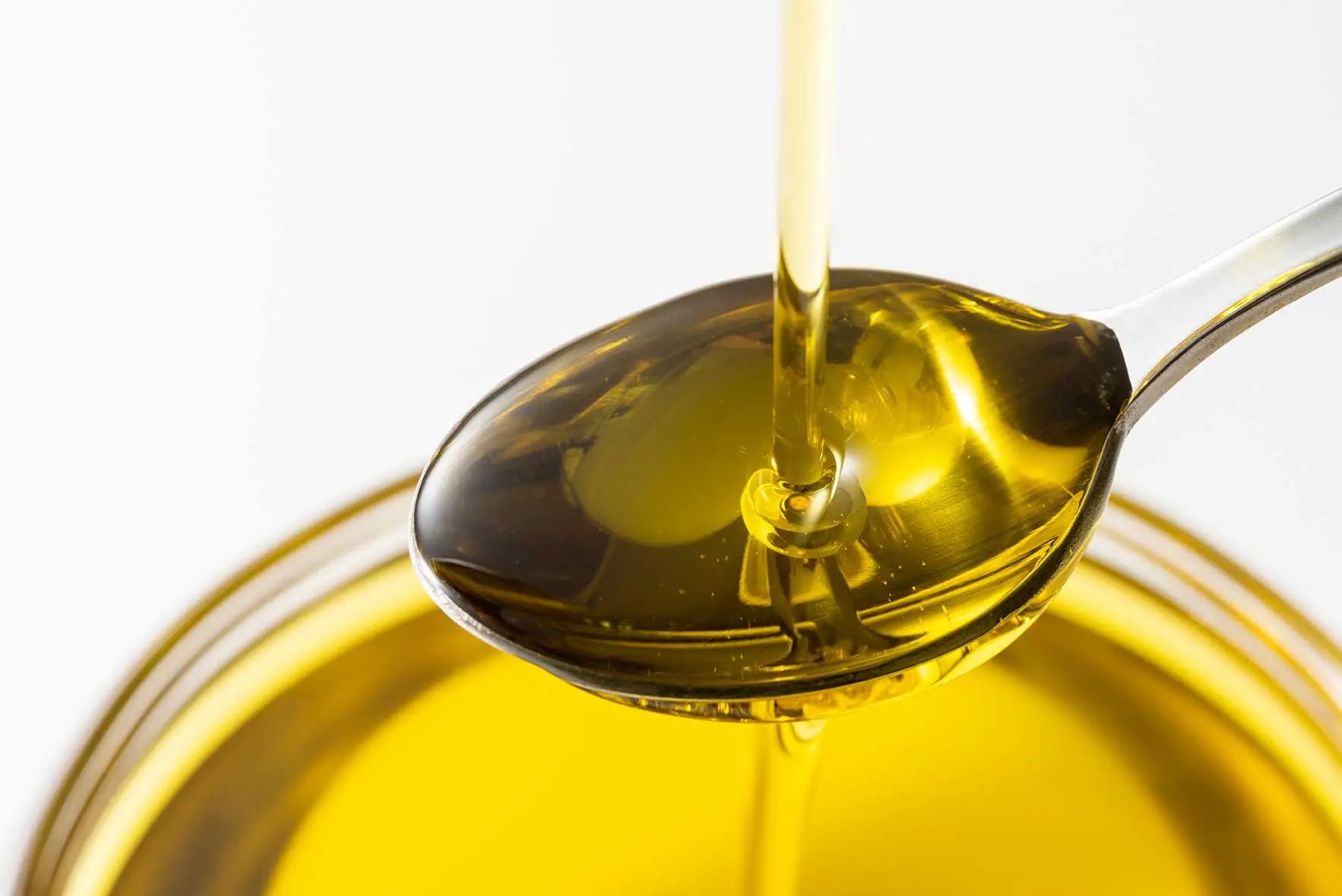
Vegetables and fats; two things your pet needs, right? Yes, but not in the form of vegetable oil, which is primarily composed of cheap corn and soybean oils. Sadly the oils are often found in cheap dog foods.
Vegetable oil, like most non-specific ingredients on dog food bags, is bad for dogs and often contains high levels of omega-6 fatty acids. While these fatty acids are essential, pets eating a processed commercial diet often have way more of these EFAs (essential fatty acids) than are healthy.
Since omega-6 fatty acids are responsible for inflammation, and omega-6 fatty acids are already heavily represented in most commercial diets and dog foods, these excess fats can exacerbate arthritis, hip and joint problems, and many other medical conditions. Many experts also consider them a carcinogen.
Healthy Alternative: Descript Fats
Pet owners should look for healthy sources of fats in animal feed that include high levels of omega-3 fatty acids, such as named fish oils (salmon), olive oils, or flaxseed oils. Only go with healthy oils. Healthier fats to look for include chicken fat and pork fat.
There are reasons to avoid tallow and lard, which are very cheap and heavily processed bad dry dog food ingredients that are low in nutrition.
17. Animal By-Products
Another non-descript protein source in dog food, animal by-products, are all the remnants of the animal carcass after all the meat and bones have been removed (probably to be used in the meat and bone meal above). Sadly, they are unhealthy fillers and known carcinogens.
What does that mean exactly? Animal by-products are not all bad. They are legally required to be free of feathers, hooves, hair, hide, beaks, offal, and any other non-edible, and other parts of the animal. Organ meats are a type of animal by-product and are a healthy ingredient and nutrition in pet food.
The issue with animal by-products, and the reason they made our list, is that they are nutritionally inconsistent when used in dry dog food. Unnamed animal by-products can be so heavily processed that little to no nutrition is left for the pet.
Remember, by-products in dog food are the parts of animals that are not typically consumed by humans, such as organs, bones, and other leftover parts. You won't find by-products in human foods.
While these ingredients in the canine food bag can provide valuable nutrients for dogs, they can also be a source of concern for pet owners. By-products can vary widely in quality and nutritional value and may even contain harmful contaminants such as antibiotics, hormones, and pesticides which can all lead to inflammation and toxicity.
Another consideration about by-products is the lack of transparency around the specific sources and processing methods used, which can make it difficult for pet owners to know what they are truly feeding their dogs.
A good rule of thumb is to familiarize yourself with healthy and unhealthy ingredients, so you know what to watch for.
To help ensure the safety and quality of the dog food they feed their pets, some owners opt for foods that use whole, human-grade ingredients or specific types of by-products that are carefully sourced and processed.
When shopping for premium dog food ingredients - pick brands that state the ingredients in the food is ‘human grade’ and not by-products.
Additionally, by-products are often cheaply sourced, so you'll never know if the by-product used in your pet's diet is actually providing valuable nutrition or simply unwanted animal parts.
If you want to stick to healthy animal by-products, look for foods that use named animal parts, like heart, liver, or kidney, as opposed to unnamed and questionable animal by-products.
Dogs should consume nutrient-rich and healthy animal parts as a way to ensure they are getting all of the nutritional value they need.
Healthy Alternative: Choose Meats
Once again, why choose anything else when what your dog and cat need most is real meat? Raw diets are a great option for any pet owner looking to ensure high levels of nutrient-rich and minimally processed real meat sources in dog foods.
Choose only foods that list human-grade ingredients on the dog food bag with an acceptable protein content for added nutrition and minerals. Both humans and pets should only consume quality meat for growth and health.
You’ll notice that your dog has good reactions to the premium meat and minerals in both health, energy, and attitude.
18. Cellulose
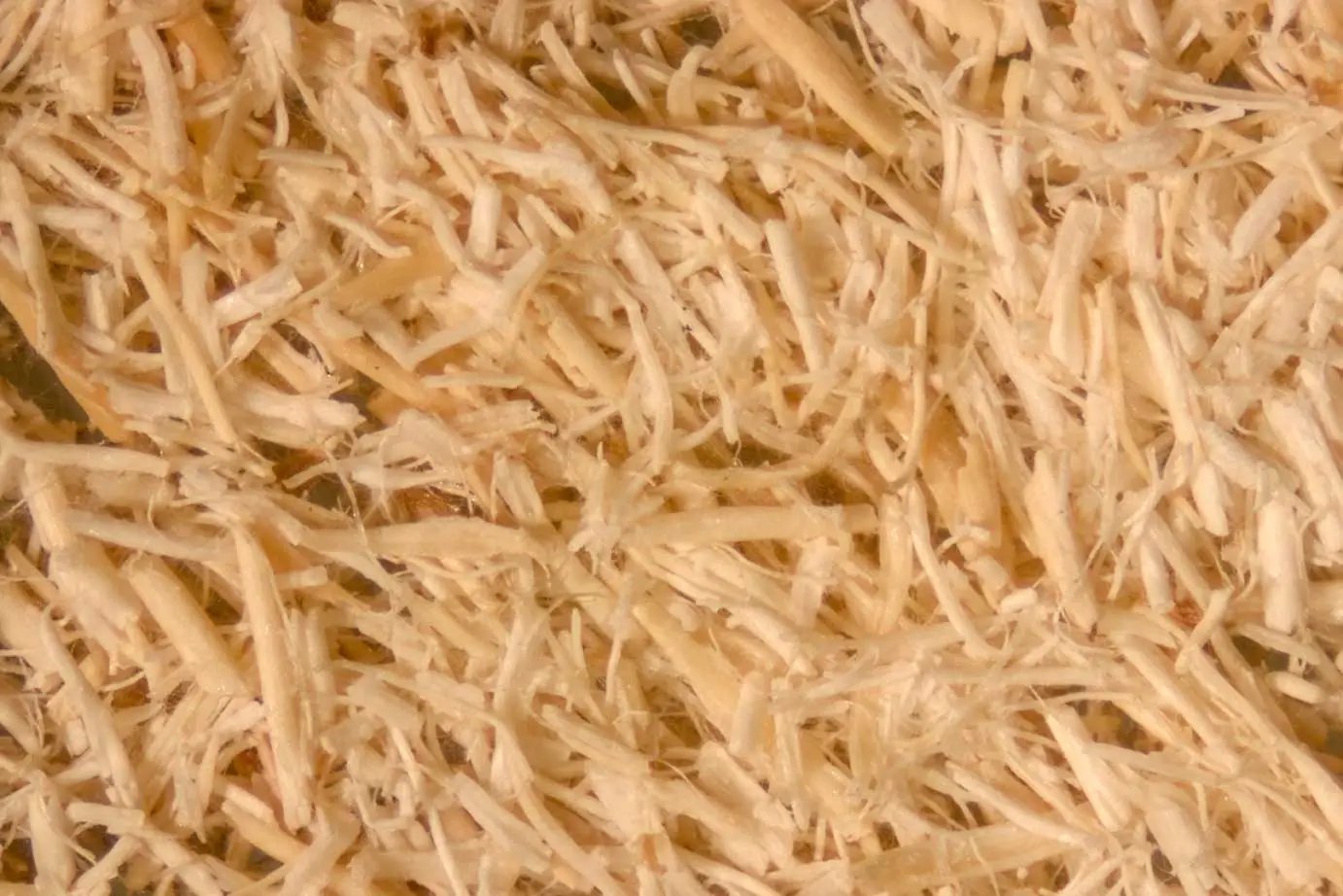
This recent additive in food is being used more and more. Cellulose is plant or wood fibres. Pet parents often wonder what is wrong with cellulose in dog food recipes.
Fibre is about all the nutrition cellulose provides. Cellulose is indigestible. While fibre is beneficial to digestion, if you and your pet are eating a balanced diet with whole foods – including fruits, veggies, and unrefined grains – you should be getting all the fibre you need.
The real reason cellulose is being added to foods is that it is a cheap binder, emulsifier, and an anti-caking agent, and can be used in diet foods to resemble fats. Oh, and it's dirt cheap. It literally grows on trees.
Cellulose can be found in your pet’s food, as well as many fast foods, diet foods, processed meat and cheese products, granola and “health” bars, processed breakfast foods, and even ice cream. The list goes on when it comes to dog food products and fibre.
Healthy Alternative: Skip It
There isn't really an alternative and anything similar for cellulose in dog food; it's nothing more than a filler, something used to create texture that should already be there if quality dog food ingredients are being used for nutrition.
19. Brewers Rice
Brewer's rice is a common carbohydrate source in low-quality dog foods, but it's also an ingredient you should avoid. While it may sound like whole grain, brewer's rice most definitely is not.
Brewer's rice is not even whole white rice. It is fragments of rice that are left over after white rice has been processed. Brewer's rice isn't toxic and does provide trace amounts of a few minerals and digestible carbs. So why is it on our list?
The real problem is that it is often used as a cheap protein source in dry dog food. It is an incomplete protein and does even come close to the nutrition provided by protein from named and healthy animal sources.
If you find brewer rice high up on your dog food ingredients list, then it can indicate that your dog is not getting as much animal protein as the packaging may lead you to believe.
Healthy Alternative: Choose Whole Grains
Look for the best whole-grain sources or whole vegetable and legume carbohydrate sources in dry dog food for more nutrition, healthy growth, and longer-lasting energy for your dog. Veggies are a great option for whole grains.
20. Corn
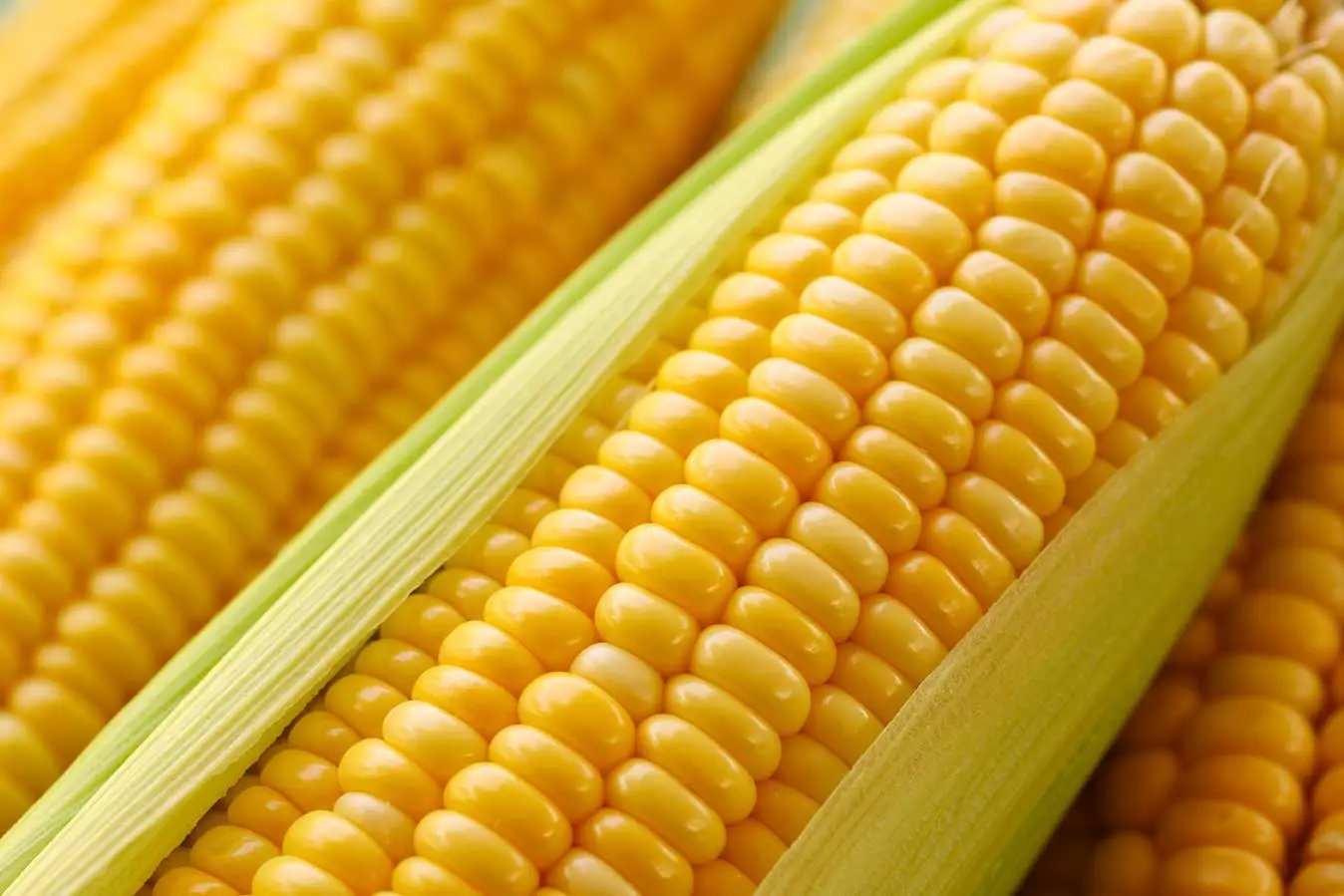
Corn does get a bad reputation as a dog food ingredient - especially corn syrup. While corn itself is a whole grain, there are a number of things wrong with it as an ingredient in pet foods.
Corn is dirt cheap and notoriously hard to digest in dry dog food. Many pets have digestive sensitivities related to corn. Also, since it has a high protein concentration for a grain, it is often added to dog food ingredients to raise the protein percentages.
However, this protein does not contain all the necessary amino acids and is not nearly as bioavailable as any animal source, such as chicken or eggs.
Lastly, corn is a subsidized, very cheap grain, so its inclusion is a marker that your pet food is looking to cut corners on nutrition for profit. Corn is one of the ingredients to avoid in dog food recipes.
Healthy Alternative: Look for Meat Proteins or Go Grain-Free
There are many better alternatives to corn for dog food. Look for nutrient-rich vegetables, such as sweet potato, to provide necessary carbohydrates and look for plenty of named meats in the dog food ingredients such as chicken, pork, beef, or salmon for quality meat protein.
You can even choose veggies as a main ingredient in the kibble. The food label will contain all of the nutrition information needed to make an informed decision about your animal's health.
21. Sodium Hexametaphosphate
This common additive in dental care dog food kibble diets may be helpful for reducing your pet's tartar, but at what cost? Sodium hexametaphosphate is dangerous in high doses but can also have adverse effects merely with ingestion.
For humans, the chemical sodium hexametaphosphate is a skin irritant and an inhalation irritant, as well as being hazardous to ingest. While tartar prevention is useful, could this sodium hexametaphosphate preventative be doing more harm than good as a non-nutritive additive to your pet's food recipes?
Healthy Alternative: Brush Your Pet's Teeth
There is no substitute for regular dental care for your pet. Brush teeth, make use of dental care products such as tooth gels, sprays, or oral probiotics, and if necessary, schedule a veterinary cleaning. This will ensure that you do not need foods with sodium hexametaphosphate
With these measures, you shouldn't have to rely on dental food for your pet with questionable dog food ingredients. For more dental care options, check out our recommendations for dental treats for dogs with bad breath.
22. Flavour
Dog food needs flavour to be appealing. However, the flavour is one of those things that should just come naturally to foods. Be skeptical about the quality of dog food ingredients when flavour needs to be added to anything because it's often a way to hide subpar ingredients.
According to the FDA and other experts, artificial flavours are rare and usually take the form of bacon or smoke flavour. Dog food flavour can be listed by itself or with something else (e.g. Bacon flavour). Most dogs love flavours, but are they healthy? Without a doubt, they lack nutrition.
But just because a flavour is listed as “bacon flavour” does not mean it is natural. Unless the ingredient is listed as natural, assume it is artificial. “Flavour” can also cover up those undesirable dog food ingredients that manufacturers know you are looking out for, like MSG.
You don’t know what you’re getting in the dog food ingredients. Potential allergens such as dairy, soy, sesame, eggs, and nuts are also possible inclusions in dog food and can be harmful to dogs and other animals. Many are considered carcinogens and will fail to meet the needs of your dog.
Healthy Alternative: Skip It
Why choose artificial when there are plenty of natural, delicious flavours out there? Choose dog food and treats that use a variety of fresh and healthy animal proteins, vegetables, fruits, and botanicals to entice dogs with ample flavour. Both humans and pets enjoy fresh ingredients.
23. Pea Protein
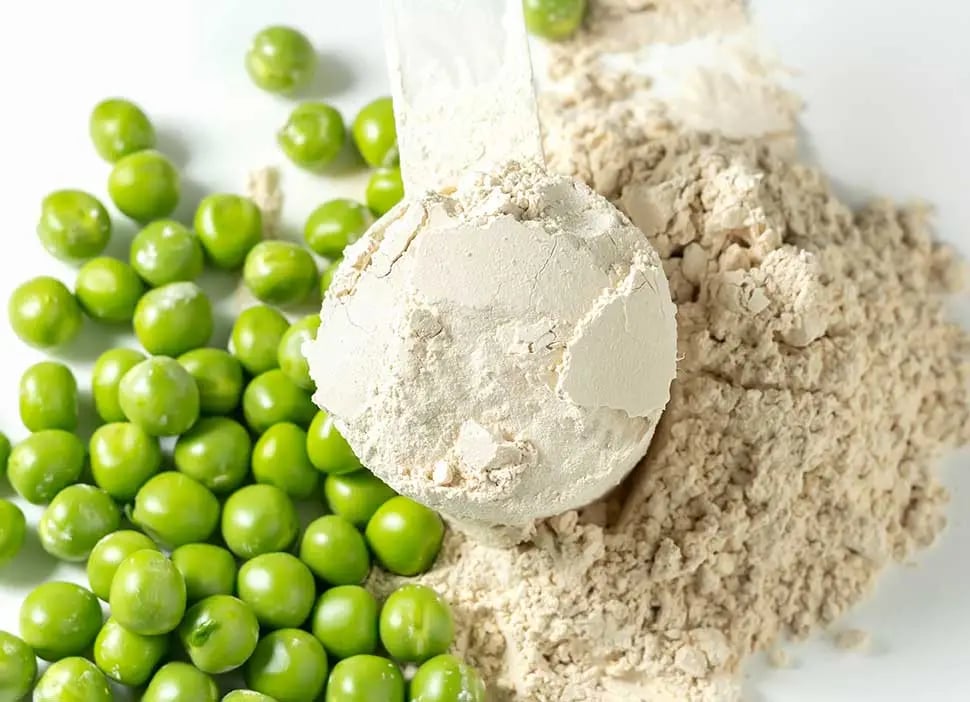
Peas are a good source of fibre and carbohydrates and even contain a high amount of protein for a vegetable. Unfortunately, when they are used in dog foods, they often lack any significant nutritional value and might even be dangerous to your dog. Many fear that pea protein might cause cardiovascular disease in dogs.
However, when this popular legume is listed only as "pea protein," you should look at it critically when you see it on the list of dog food ingredients. These peas in your dog food ingredient lists are dried peas, similar to split peas, not the goodness of fresh peas in a pod you might be thinking of.
Pea protein has risen to popularity as an ingredient found on the food labels in many cheaper grain-free pet foods. Containing 55% protein in its concentrated form, pea protein can be used to boost the protein content of food recipes cheaply.
When pea protein is included in your pet's food, the manufacturer could be trying to make up for a lack of meat-based protein nutrition.
Pea protein is not as complete in amino acids as animal proteins are, and its biological value is not as high. That means that your dog will not be able to use all of the protein within peas, so will not achieve the needed protein content for optimum health from the vegetable.
Healthy Alternative: Skip It
Yes, veggies are good for your pet, but pea protein is not great as a replacement for healthy named animal protein. Avoid dog foods with pea protein high up in the ingredient list, especially within the first 7 dog food ingredients.
If it's lower than that, it's less likely to make a big difference in the protein makeup of your pet's food and nutrition for healthy growth.
24. Animal Digest
Animal digest is another non-descript meat source produced by the chemical or enzymatic hydrolysis of clean animal tissue that has not undergone decomposition. Animal tissue scraps are one of the ingredients to avoid in dog food.
Basically, it is a mixed “meat” broth that is heavily processed. Used as a flavouring, the meat broth is sprayed onto dog food to cover up unsavoury flavours and make up for a lack of actual meat flavour from, you know, meat. According to FDA experts:
“With respect to flavors, pet foods often contain "digests," which are materials treated with heat,enzymes and/or acids to form concentrated natural flavors. Only a small amount of a "chicken digest" is needed to produce a "Chicken Flavored Cat Food," even though no actual chicken is added to the food.”
Healthy Alternative: Choose Better Quality
The inclusion of animal digest or any digest indicates that insufficient meat protein is included in the food. After all, if the dry dog food contained plenty of healthy, nutritive, and protein-rich meat, why the need for meat flavour? Canine foods should naturally taste good to dogs while offering nutrition in the recipes.
Making Good Pet Nutrition Choices
There are many high-quality dog foods out there, like Orijen, Fromm, Purina, or Ziwi Peak, that have impressive dog food ingredients. These super-premium, minimally processed foods are filled with nutritional dog food ingredients such as free-range chicken, organic vegetables, and whole fruits, complete with antioxidants.
These canine foods do not contain cheap, questionable dog food ingredients that many manufacturers use to turn a high profit or make their dog food impossibly cheap. The best dog foods contain human-grade ingredients, veggies, and even fruit in their recipes for optimum nutrition.
Price is not always an indicator of quality with dog food, but the dog food ingredients list doesn't lie – if you know how to read it. The first step is checking for these 24 dog food ingredients that are bad for dogs.
There are so many good, healthy things you can include in your dog's diet. Please, do your dog a favour and skip the above bad ingredients that are often found in subpar canine foods. Instead, pick the best healthy dog food brand with human-grade ingredients as a way to ensure the health of your pet. Healthy food and treats improve the lives of pets.
Common Questions About Ingredients in Dog Food
What are the bad ingredients in dog food?
Bad ingredients in dog food refer to ingredients that are potentially harmful or nutritionally inadequate for dogs. These ingredients may include artificial additives, low-quality fillers, and certain by-products.
Why should I be concerned about bad ingredients in dog food?
Paying attention to the ingredients in your dog's food is important because they can impact your dog's overall health and well-being. Bad ingredients may lead to digestive issues, allergies, nutrient deficiencies, and other health problems in dogs.
What are some common bad ingredients found in dog food?
Common bad ingredients found in dog food include artificial preservatives (such as BHA, BHT, and ethoxyquin), artificial colours, corn syrup, wheat, soy, by-products (such as meat by-products or poultry by-products), and excessive amounts of salt or sugar.
How can I identify bad ingredients in dog food?
Reading the ingredient label is key to identifying bad ingredients in dog food. Look for specific names of ingredients and avoid foods that contain artificial additives, low-quality fillers, and by-products. It's also important to consider the overall nutritional profile of the food.
Are all by-products considered bad ingredients in dog food?
Not all by-products are bad ingredients. High-quality by-products, such as organ meats, can provide valuable nutrients for dogs. However, it's important to know the specific source and quality of the by-products used in dog food.
What are some alternative dog food options that avoid bad ingredients?
There are several alternative dog food brands that put high-quality ingredients first while completely avoiding bad ingredients. These include natural or organic dog foods, limited ingredient diets, grain-free options, and homemade dog food prepared with guidance from a veterinarian or canine nutritionist.
.png?width=200&height=66&name=logo%20(1).png)





